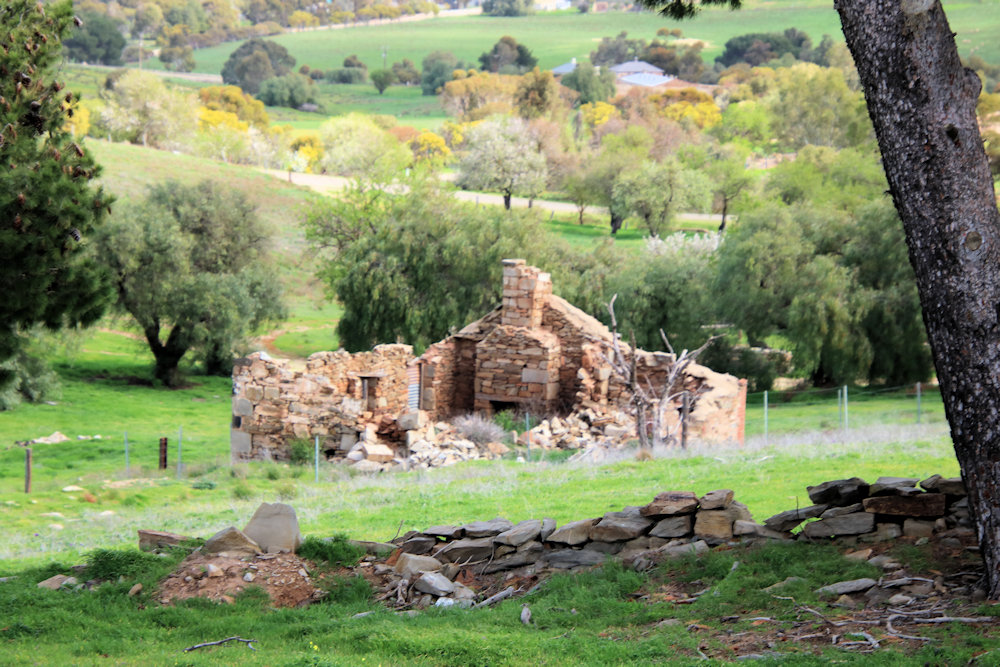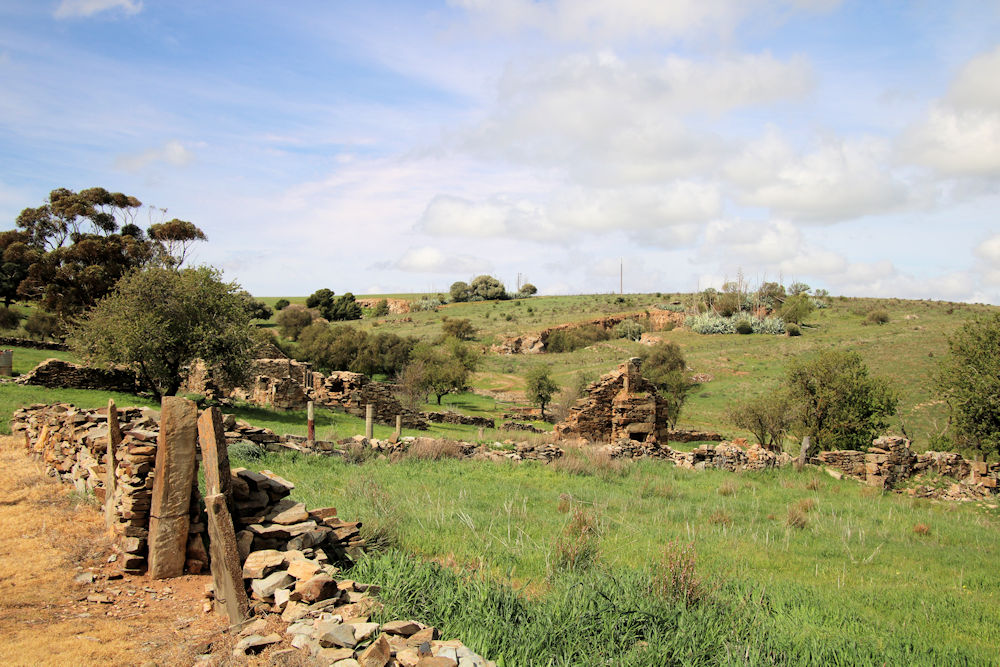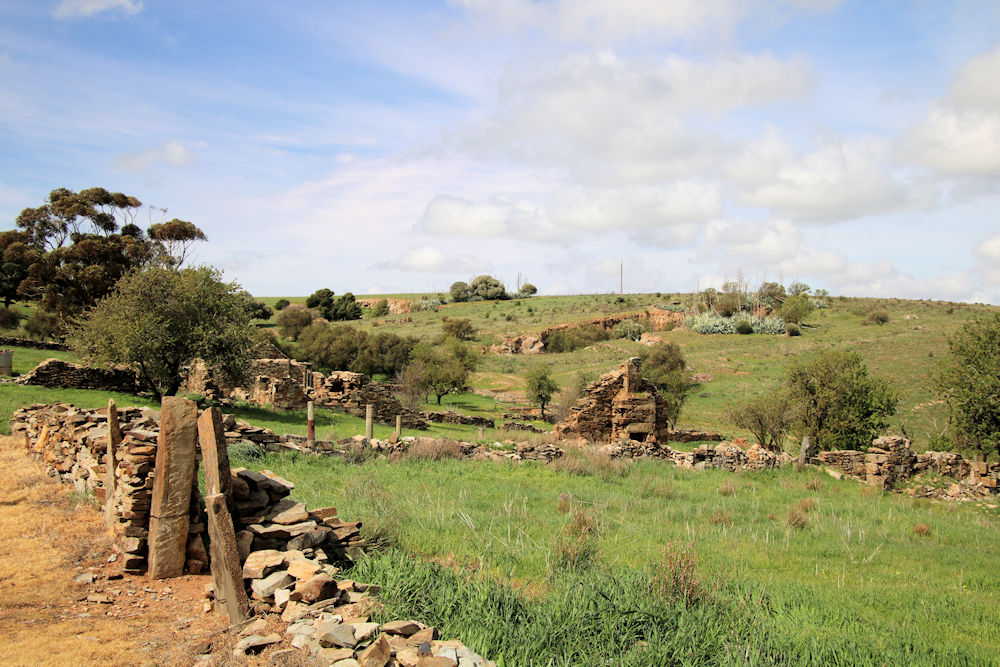Hampton Village at Burra
Hampton Village is one of the many heritage sites in Burra, South Australia. Once a bustling settlement of Cornish miners and their families, today it lies in ruin with its rows of bluestone cottages reduced to roofless shells. Alongside the Burra Mine and Redruth Gaol, Hampton Village provides a direct link to the copper-mining boom that shaped South Australia’s early development.
Origins of Hampton Village
Burra was established in 1845 following the discovery of copper in the region. Within a few years, the Burra Mine became one of the world’s largest copper producers. To work the mine, hundreds of skilled miners were recruited, many from Cornwall, England. These migrants brought with them not only their mining expertise but also their traditions, language, and way of life.
By the early 1850s, the Burra Burra Mining Company built Hampton Village as housing for its workforce. Situated close to the mine, it consisted of neat rows of stone cottages laid out in a regimented pattern, reminiscent of English mining settlements. Each cottage typically had two or three rooms, small windows, and a fireplace, built of local bluestone with slate or timber roofing.
Decline and Abandonment
The prosperity of Burra’s Mine peaked in the 1850s. By the late 1860s, copper production had declined as easily accessible ores were exhausted and overseas competition grew. Families began to leave in search of work, some moving to new mining centres in Moonta, Kadina, or even overseas.
Hampton Village gradually emptied. Roofs fell in, doors disappeared, and the once-bustling cottages became silent ruins. By the early 20th century, Hampton was abandoned, and the nature began reclaiming the site.
The Ruins Today
Today, Hampton Village survives as a landscape of stone shells. Dozens of cottages still stand in varying states of ruin, their bluestone walls weathered but remarkably durable. Chimneys, fireplaces, and doorways remain as skeletal reminders of domestic life. The layout of the village is still clear, with rows of houses and laneways forming a grid.
Interpretation and Preservation
Hampton is accessible as part of the Burra Heritage Passport experience, which grants access to key sites around the town. Visitors are free to wander through the ruins, aided by interpretive signage that explains the village’s history and its role in Burra’s mining heritage.
Unlike some reconstructed heritage sites, Hampton has been left largely untouched. Its interest lies in its authenticity with the ruins as time and neglect have left them.
Hampton is often compared with other Cornish-influenced settlements in South Australia, such as Moonta and Kadina. While those towns developed into permanent communities, Hampton’s decline and abandonment have given it a very different character. Instead of a living town, it has become a ghostly reminder of the transient nature of mining booms and the vulnerability of the people who depended on them.
Burra Heritage Passport Scheme
Hampton Village is included in the Burra Heritage Passport scheme. Visitors collect a key and guidebook from the Burra Visitor Information Centre.




To find more things to see and do in South Australia, click here.
Our photos are available for purchase on

Leave a Reply